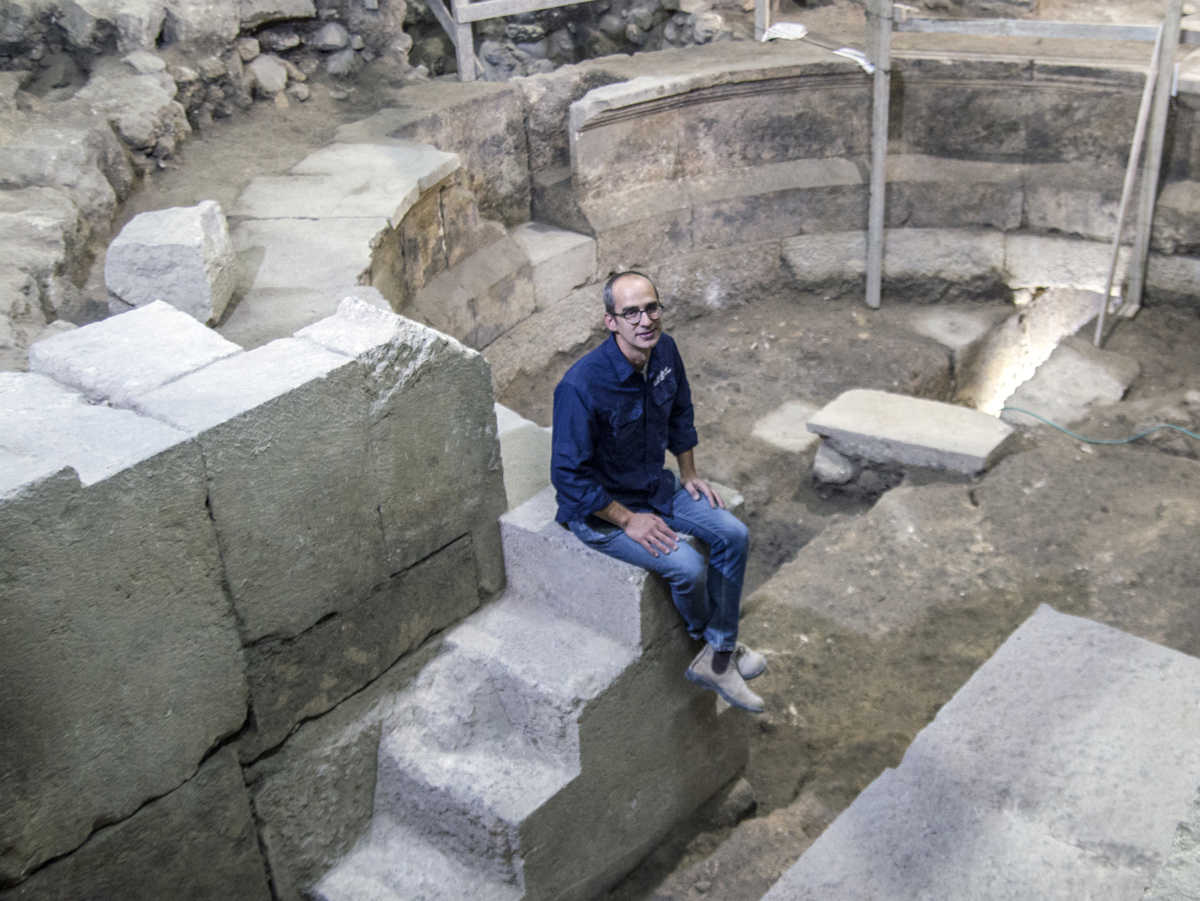
Worshipers at the Western Wall for the last two years have been blissfully unaware of an underground excavation conducted practically beneath their feet – and of the pagan insult to their holiest site it exposed.
A two-year excavation funded by the Western Wall Heritage Fund and the Israel Antiquities Authority has revealed the remains of a Roman odeon, or small theater, at the base of the Western Wall of the Temple Mount. Located at the north corner of today’s Western Wall plaza, and dropping many courses of stone below it, this section of the wall connected to a massive bridge leading to the Temple courtyard and supported by what is known today as Wilson’s Arch (after the 19th-century British explorer who first identified it).
The theater was built in the shade of the arch, to provide shelter from wind, sun and rain, with its ranks of stone seating facing away from the Temple Mount. Not only would any audience seated there be very literally turning their backs on the Jews’ holiest site, the fairly massive structure also straddled the drainage tunnel which just a few hundred meters further south, runs beneath the route of the Tyropoeon Way. Archaeologists were hoping to expose the continuation of that pilgrim road along the base of the Western Wall – only to encounter the theater instead.
Dating based on coins, building style and materials suggests that the theater was constructed in the mid-second century, presumably as part of the Roman polis of Aelia Capitolina, Emperor Hadrian’s replacement for the Jewish city of Jerusalem razed by his predecessors. That would explain why the theater turned away from the Mount, into the pagan city, but not another curious aspect of the monument – the fact that it was never finished. At one side of the theater, an entrance post is fully carved out; a matching post at the opposite side is almost finished, with a last section of stone marked to be chiseled away, but never completed. Some of the stone steps leading up to the seating section are still waiting to be smoothed; the seats themselves never seem to have been carved, let alone occupied, although second Temple period paving stones were hauled into place to be reused by Roman posteriors.
Why was this small architectural gem abandoned in mid-construction? Could it be that it holds an answer to a question that has long puzzled archaeologists – whether Aelia Capitolina was cause or effect of the Bar Kokhba revolt (132-136 CE)? Was the city built by Hadrian to “punish” his Jewish subjects for the insurrection that destroyed an entire Roman legion, after which he renamed the country Syria Palaestina and sold most of its Jewish citizens into slavery in an attempt to quite literally wipe them from the map? Or was it one of Hadrian’s many building projects, whose pagan character and sensitive location on the site of their ancient capital incensed the Jewish population of Judea to such an extent that they rose in revolt? Could it be that the revolt caught the theater’s Roman builders in mid-construction, forcing them to abandon the project, never to be completed?
The latest coin found in the theater excavation dates to 380, the late Roman period, when the theater was covered by consolidating landfill, two decades after a massive earthquake shook the area. But it’s hoped that the results of carbon dating, rarely used in Jerusalem, will help determine the beginning of construction. Further research will hopefully provide more answers, but meanwhile a new riddle has just been revealed in the epicenter of Jerusalem.
